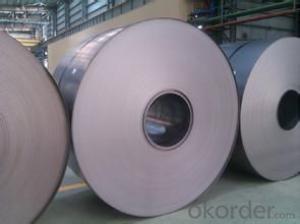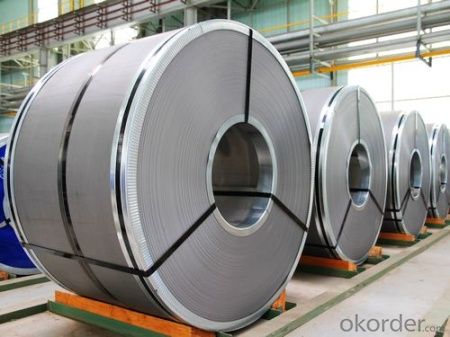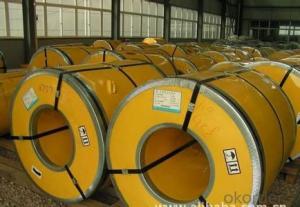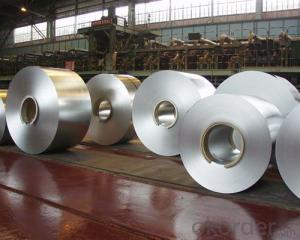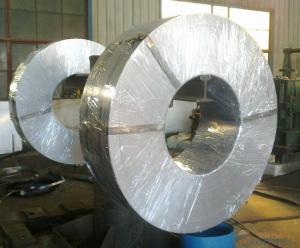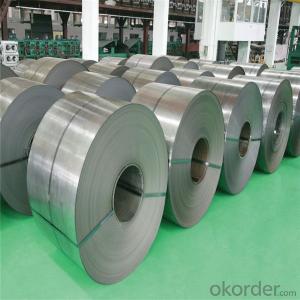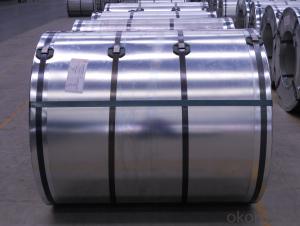cold rolled steel coil full hard
- Loading Port:
- China Main Port
- Payment Terms:
- TT OR LC
- Min Order Qty:
- -
- Supply Capability:
- -
OKorder Service Pledge
Quality Product, Order Online Tracking, Timely Delivery
OKorder Financial Service
Credit Rating, Credit Services, Credit Purchasing
You Might Also Like
Specifications
1.10year's experience
2.competitive price
3.advanced product machine
4.rich export experience
5.delivery on time
As a professional manufacturer and exporter, we have all the necessary license as above.
With good quality and competitive price, we warm a good reputation in domestic and international markets.
We hope to build a good and long relationship with customers from home and abroad.
Any doubts & questions, pls feel free to contact me I shall be more than pleased to be on service of you.
- Q: 911 conspiacy theorists. Can fire melt steel?
- Don't know the differences in steel strength between the WTC towers and the bridge, but I'll tell you they don't always use the strongest steel in buildings. It is a question of value engineering. Engineers do as code requires, and make the determination based on economics of building. If a steel member requires say 48 KSI, with certain span, but if the price is less expensive to use 35 KSI and reduce the span by adding vertical elements then that is an option that the architects, engineers and developers consider. Like I said, don't much about bridge engineering, but in buildings, it isn't always the strongest steel, based on engineering and economics. And BTW, said time and time again, but ok one more time. STEEL DOESN'T NOT HAVE TO MELT FOR FAILURE. IT LOSES STRENGTH WITH HEAT. THAT IS WHY IT MUST BE PROTECTED BY FIRE RETARDANT. BUT IF THE FIRE RETARDANT IS REMOVED BY EXPLOSION, THEN FIRE CAN CAUSE FAILURE. Sorry for the shouting, but I'm not the only one who says that, but people keep saying steel can't melt, but it doesn't have to for failure. If the steel joist had been in concrete, the WTC towers may have stood, at least longer. But hindsight is 20/20.
- Q: A song by brokencyde is called Blue Steel.... a verse in it says Don't make me show you blue steel.
- Actually, it is a reference to the movie Zoolander, which is a comedy. Ben Stiller's character (Zoolander) is a fashion model (and assassin) and he gives names to the poses he takes in front of the camera. One of the poses, which nobody can supposedly resist, is called Blue Steel. Although bluing is something that actually is done to gun metal to harden it (i.e. heating/plating with nickel), that is not what this particular song is referring to.
- Q: Are steel buildings or homes better then wooden buildings? Why?
- Steel is better than wood. Steel can support more weight than wood. Steel is also much more durable than wood. Termites and rot are not a problem, which results in lower maintenance cost later. Also, wood can rot and warp whereas steel will not. Steel is also more economical than wood. The construction requires less labor, and as a result the labor cost is much lower. Steel is fire resistant, which will lower insurance costs.
- Q: How do steel coils contribute to the energy infrastructure sector?
- Steel coils play a vital role in the energy infrastructure sector by providing the necessary materials for the construction and maintenance of various energy-related structures and equipment. Firstly, steel coils are widely used in the production of pipelines, which are the lifelines of the energy industry. These pipelines transport oil, natural gas, and other energy resources over long distances, ensuring a steady supply to power plants and other energy facilities. Steel coils are used to manufacture seamless and welded pipes that possess high strength, durability, and resistance to corrosion, making them suitable for handling the harsh conditions of energy transportation. In addition to pipelines, steel coils are used in the production of storage tanks for oil, natural gas, and other fuels. These tanks are crucial for storing large quantities of energy resources, ensuring a continuous supply even during periods of high demand. Steel coils are utilized to fabricate the tank shells, providing the necessary strength and structural integrity to withstand the pressure and environmental factors associated with energy storage. Furthermore, steel coils are instrumental in the construction of power plants and other energy infrastructure facilities. They are used to manufacture structural components such as beams, columns, and supports, which provide the foundation and stability required for the safe operation of these facilities. Steel coils also contribute to the production of equipment such as turbines, generators, and transformers, which are essential for converting energy into usable forms and distributing it to end-users. Moreover, steel coils are utilized in the construction of transmission towers and electrical grids. These structures and networks are responsible for transmitting electricity from power plants to residential, commercial, and industrial consumers. Steel coils are used to manufacture the towers and poles that support high-voltage transmission lines, ensuring their stability and reliability in transmitting electricity over long distances. In summary, steel coils are indispensable in the energy infrastructure sector as they provide the necessary materials for the construction, maintenance, and operation of pipelines, storage tanks, power plants, transmission towers, and electrical grids. Their strength, durability, and resistance to corrosion make them an ideal choice for withstanding the demanding conditions of the energy industry, thereby ensuring a reliable and efficient energy supply to meet the growing needs of society.
- Q: What are the different types of steel coil slitting blades?
- There are several different types of steel coil slitting blades, each designed for specific applications and materials. Some of the most common types include: 1. Circular slitting blades: These are the most commonly used blades for slitting steel coils. They are circular in shape and have a sharp edge that cuts through the coil as it rotates. Circular slitting blades can be made from various materials, such as high-speed steel or tungsten carbide, depending on the desired cutting performance and durability. 2. Arbors: Arbors are another type of steel coil slitting blade that is used in conjunction with circular slitting blades. They are cylindrical in shape and hold the circular blade in place, allowing for precise and consistent slitting of the coil. 3. Shear slitting blades: Shear slitting blades are used for cutting thicker and harder materials, such as stainless steel or aluminum. They have a straight edge and work by shearing the material apart, rather than cutting through it like circular blades. Shear slitting blades are typically made from high-quality tool steel to withstand the high forces involved in cutting thicker materials. 4. Crush cut slitting blades: Crush cut blades are used for slitting softer materials, such as paper or plastic. These blades have a blunt edge that crushes and tears the material, rather than cutting it cleanly. Crush cut blades are often made from materials like carbon steel or hardened stainless steel. 5. Razor slitting blades: Razor slitting blades are used for slitting delicate materials that require a clean and precise cut, such as thin films or foils. These blades have an extremely sharp edge that slices through the material without causing any damage or distortion. Razor slitting blades are typically made from high-quality stainless steel or tungsten carbide. It is important to select the appropriate type of steel coil slitting blade based on the specific application, material, and desired cutting performance. The choice of blade will greatly impact the quality and efficiency of the slitting process.
- Q: The difference between aluminized color steel roll and ordinary color steel roll
- Aluminized color coated sheet is a new type of material produced in China in recent years due to its high end applications. It is often used as an indication of CCLI. It is made of galvanized steel sheet (55% aluminum, 43% zinc and 1.6% silicon), which is more galvanized and more corrosion resistant. It is processed by surface degreasing, phosphating and complexing treatment, and is coated with organic coating.
- Q: does regular steel rust? or is it all the same.
- There are dozens of types of steels, some stainless and some not. They differ a lot in their chemical composition and in how they're made (especially heat treating methods). They all vary in their strength, working properties and corrosion resistance. Regular steel (technically carbon steel--mostly iron, with a little bit of carbon) rusts quite badly if unprotected and in the right environmental conditions i.e. humidity/moisture. The iron in regular steel reacts with oxygen to form iron oxide--the orange/red stuff we call rust. Iron oxide is a loose and porous material which provides no protection to the underlying steel, which is why rusted regular steel will continue to rust. Stainless steel, in addition to containing iron and carbon, contains chromium as a component--and it's the chromium that is important for corrosion protection. To be fair, even stainless steel rusts but what happens is that it's the chromium that reacts with oxygen to create a microscopically-thin layer of chromium oxide. This layer is very tough and actually protects the uncorroded steel, preventing further corrosion. Broadly speaking, the higher the chromium content, the more corrosion resistant the stainless steel.
- Q: So today I was bored and was reading a shotgun shell box,the box was slug 12ga.I noticed it said not to be used in Damascus steel or twist barrel.It was to my understanding that Damascus steel is very strong and many stories came from what it could cut when used in a blade or sword.The little bit of info that i could find was that Damascus used earlier in the turn of the century on shotguns should not be fired unless special maintenance has been given and check out by gunsmith.So is Damascus not strong like i thought and not be able to handle higher pressure or why the reason for the warning?*
- Damascus steel is is great for blades, but does not have the strength to stand up to smokeless powder pressures.
- Q: How are steel coils inspected for width variations?
- Steel coils are inspected for width variations by using a non-contact laser measurement system. This system measures the width of the coil at various points along its length, ensuring that it meets the required specifications.
- Q: Is there a chemical that can be applied (spraid, brushed, adhere) to a steel surface to decrease the heat conductive properties of the metal (so it doesn't heat up as quickly)?Thanks in advance!
- There is, but I don't know what it is made out of. It is probably some fireproof, foam material which acts like insulation. I doubt it is designed to resist abrasion however. Most things which adhere to metal surfaces are not flameproof, and those which do resist fire are not good insulators. For example, the ceramic coating of appliances like stoves and washing machines adhere very well and are fire resistant, but do not insulate. It was the failure of the steel insulation which caused the collapse of the world trade centers. The impact of the airplane tore away all the insulation on the supporting struts of the building and then the fire caused the steel to soften and break. Steel was once insulated by wrapping it in asbestos cloth and then applying plaster over this to form a shell. It did not actually adhere to the steel but it did insulate it, and was fireproof. However asbestos is a cancer hazard and a lot of old buildings are being stripped of their asbestos as a safety precaution. The asbestos can be replaced with fiberglass which is usually duct taped together.
Send your message to us
cold rolled steel coil full hard
- Loading Port:
- China Main Port
- Payment Terms:
- TT OR LC
- Min Order Qty:
- -
- Supply Capability:
- -
OKorder Service Pledge
Quality Product, Order Online Tracking, Timely Delivery
OKorder Financial Service
Credit Rating, Credit Services, Credit Purchasing
Similar products
Hot products
Hot Searches
Related keywords
